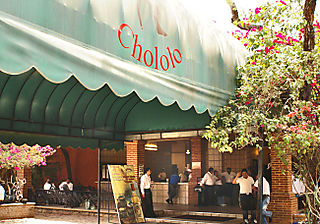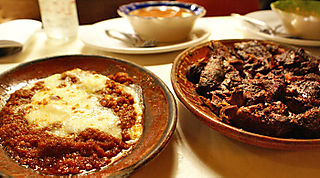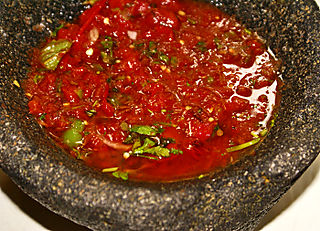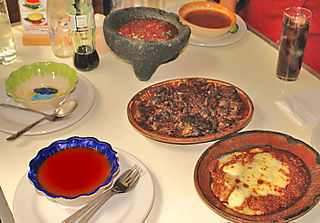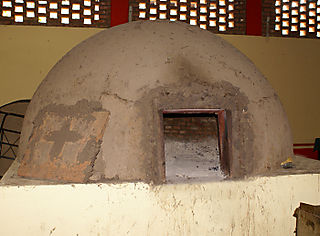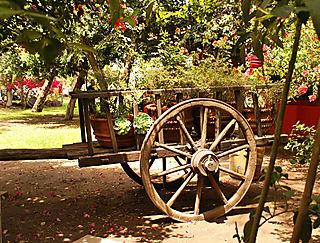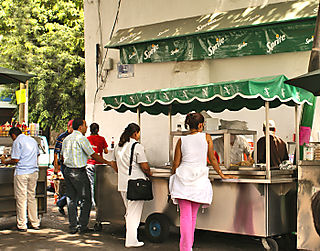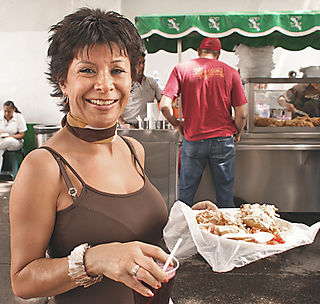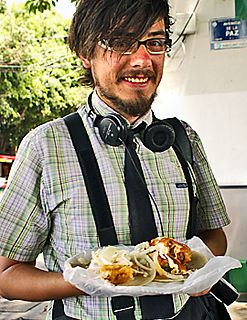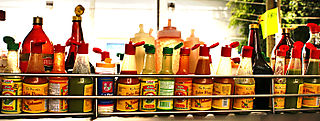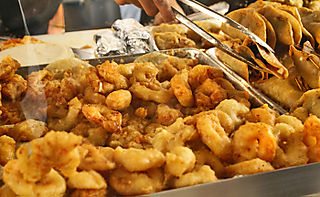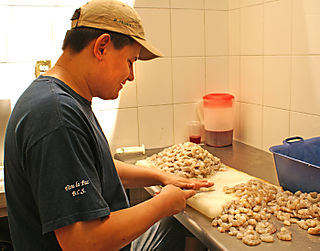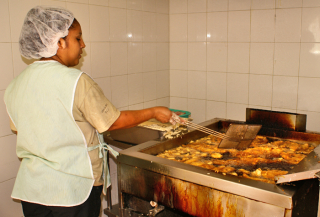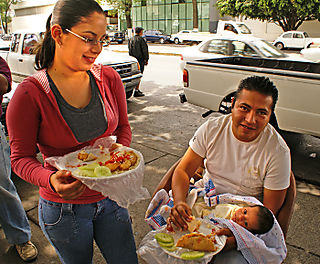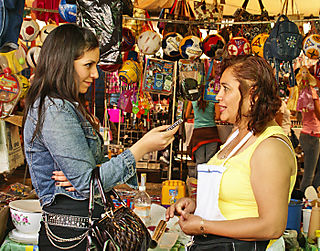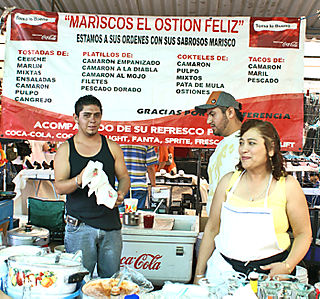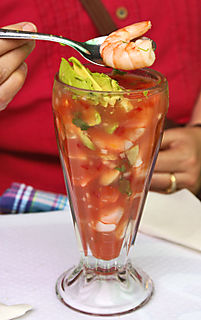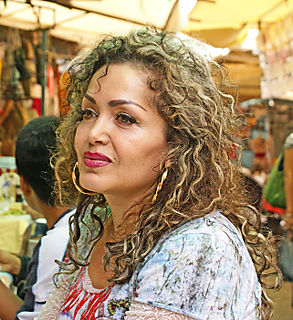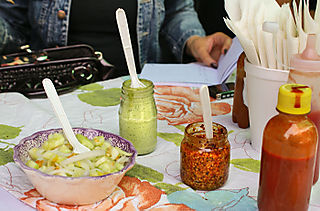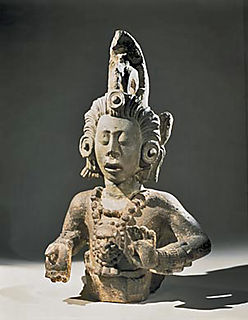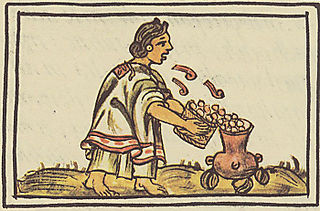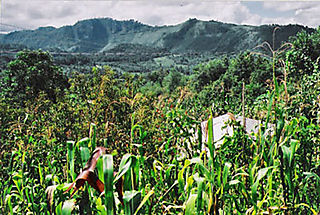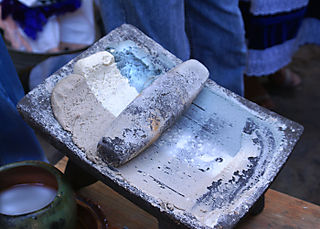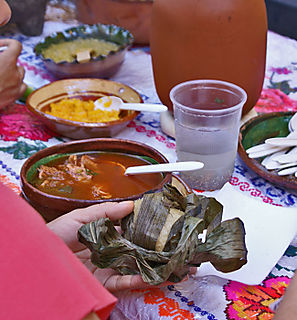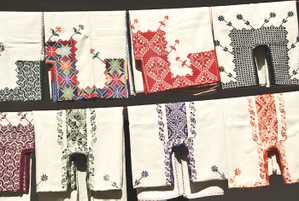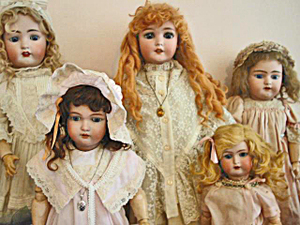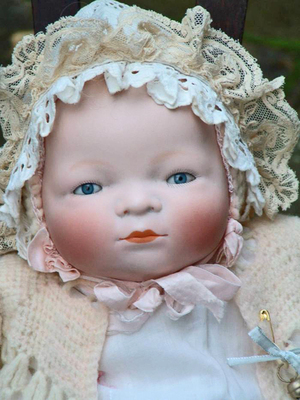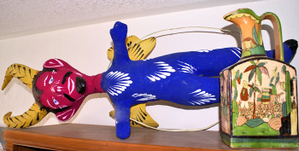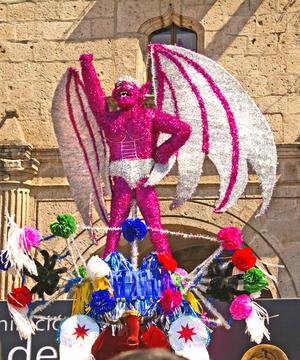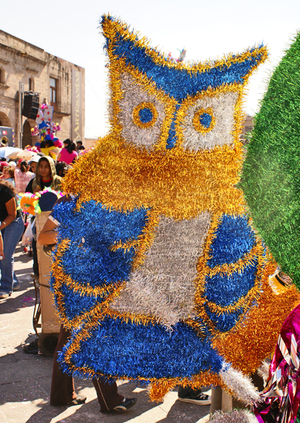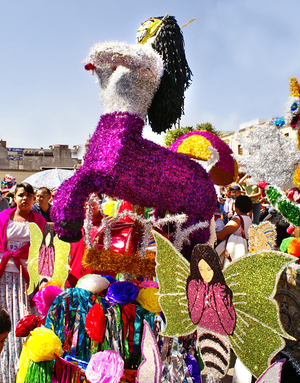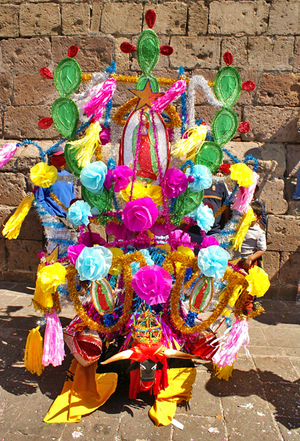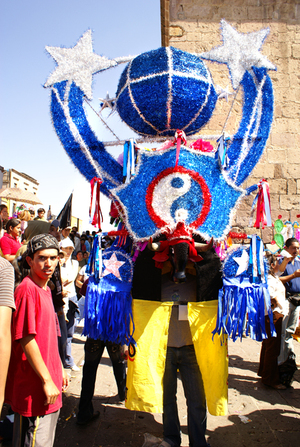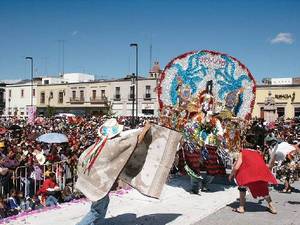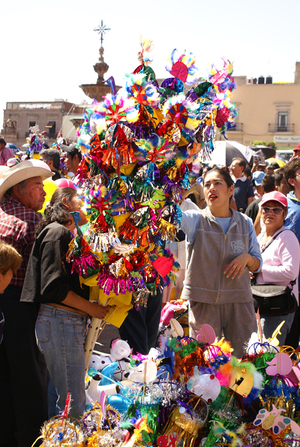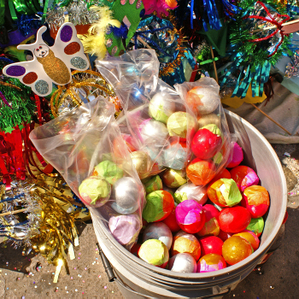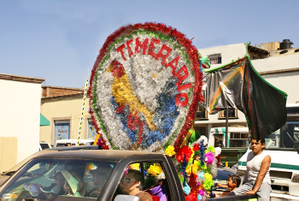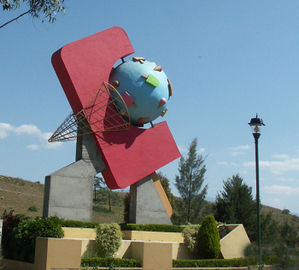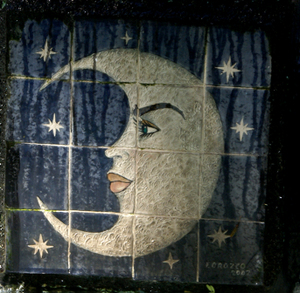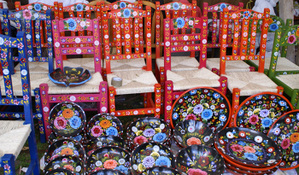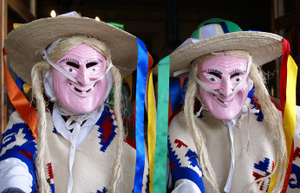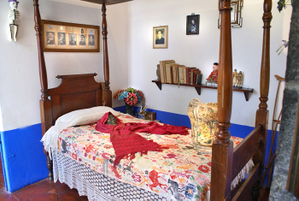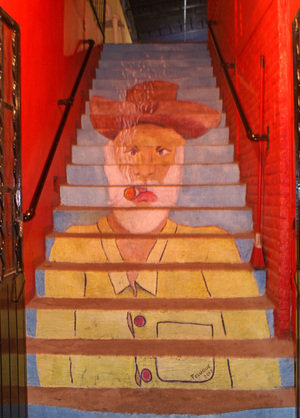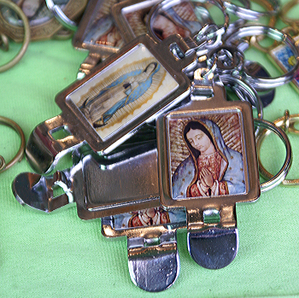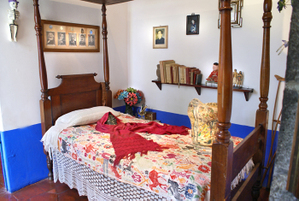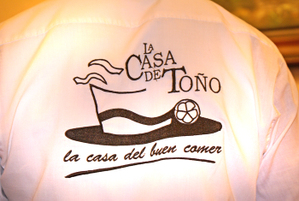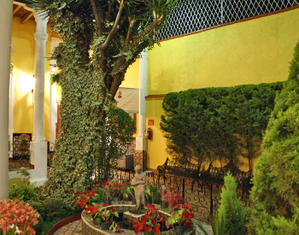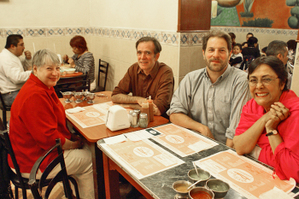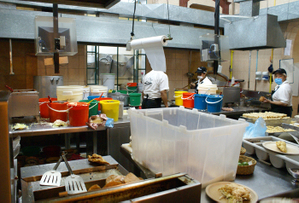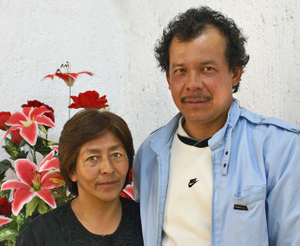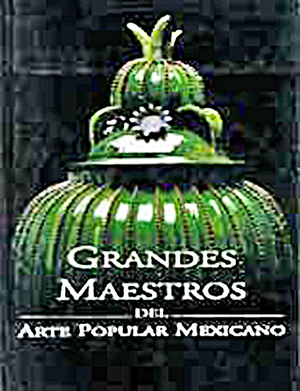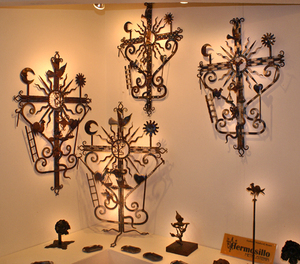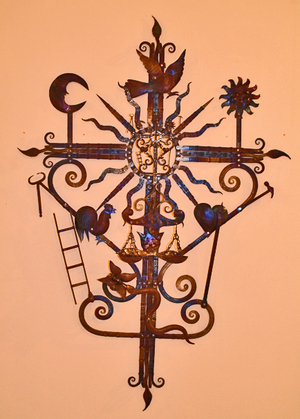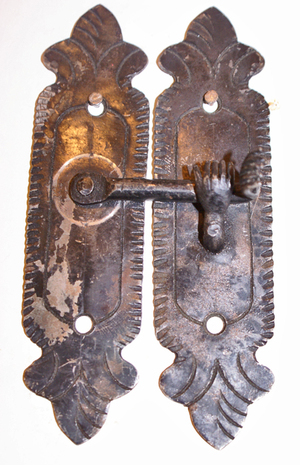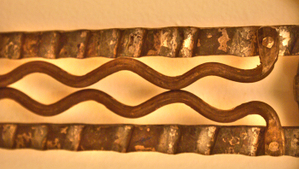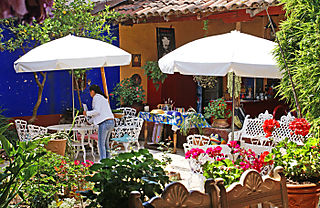
The red-geranium-filled patio at the charming Red Star Café.
From start (Espresso Rosa Luxemburg, one shot) to finish (Flan Casero Comunero), the menu at the Red Star Café lets you know that the collective owners aren't run of the mill. But how in the world did the Colectivo Las Rosas find its way to way-way-way off the beaten path Erongarícuaro, Michoacán, and why in the world did it open a restaurant?
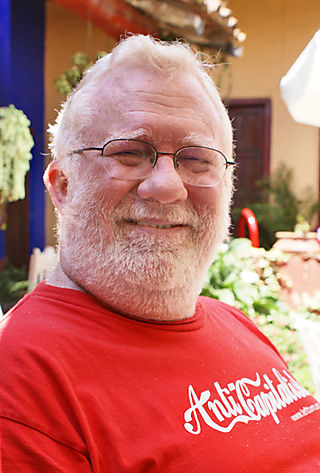
Carlos Dews, the self-described red diaper baby, green revolutionary communist, anti-capitalist barista (gourmet coffee concocter), and spokesperson for the Red Star Café.
In Carlos' own words:
"I came up with the idea of the Red Star Café. I thought it was a catchy
name and the decorating of the place became easy seeing as how I
already had a cool Trotsky poster bought at the Trotsky Museum in
Mexico City, a dog-eared copy of the Communist Manifesto in Spanish,
seven unpainted tables and twenty-something humpbacked chairs that just
cried out for a coat or two of mandarin red. Add a CD of music from the
Mexican Revolution, a gaggle of red clay pots in which to plant
red-bloomed geraniums, and I knew where I could get some print-outs of
ancient photos of Marx and Mao and Prince Kropotkin and a square
kilometer of bright red tablecloths. It seemed a good fit.
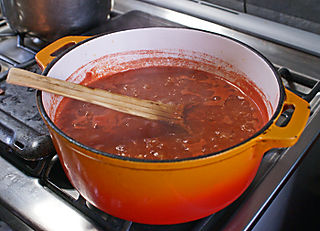
Salsa roja (red sauce) at the Red Star Café.
"I am not a romantic or a utopian. I know that what I am doing here at
the Red Star Café is not communism or anything like it. As Trotsky
said, "Communism cannot exist in isolation." He figured out that one
country raising the red flag and proclaiming itself communist did not
make it so, and, as a matter of fact, would probably lead to the dreary
and deadly bureaucratism that invaded the Soviet Union under Old Joe
Stalin. I hope that, at least, I can avoid that trap.
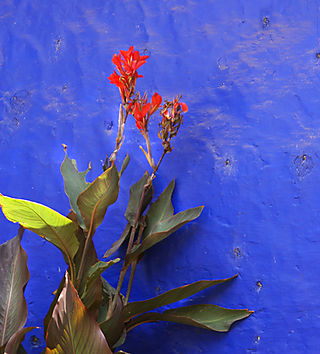
Red lilies against a sun-baked añil (cobalt blue) wall at the restaurant.
"But
Trotsky was right. A worldwide revolution lead by the working class is
the solution to our problems today. An old gringo living in a dream
world, however cushy and cool, is not going to change anything much."
You can read the rest of the story at http://erongaredstarcafe.blogspot.com/2008_05_01_archive.html.
A while back,Mexico Cooks! drove over to the Red Star Café for almuerzo (late breakfast). A day or so later, Carlos emailed to ask if everything had truly truly truly been up to snuff. We hemmed and hawed, but eventually said a couple of things could have been a bit better. We accepted the restaurant's invitation to come back at the end of June and give the staff a few tips about food preparation and service, and what a good time we all had! Mexico Cooks! spent four hours with Carlos, Juan, Susy, and Elizabeth, working out some trouble spots and cooking up some new additions to the restaurant menu.

Juan, head chef at the Red Star Café.
In Carlos' words:
"About half of the time was spent in just talking and asking and
answering questions. Chef Cristina gave us some great new ideas about
how, for example, to set up the tables for our guests, as well as how
to best attend to their needs and make them absolutely comfortable
while they are in "our home".
"She also helped us design a better
way to arrange the kitchen, which had been getting to be more and more
a source of irritation since our business is expanding every day and we
were quite actually bumping behinds and stumbling all over each other
in our tiny space. So we set up two mise en place, which are, in more
common parlance, work stations. We now have two set up in the kitchen,
one for Juan and one for Susy.
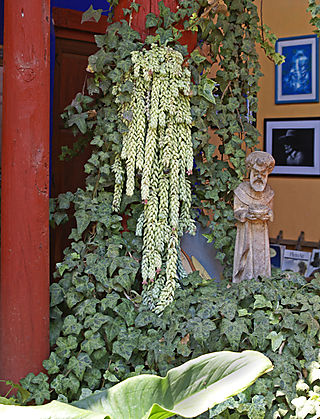
St. Pascual Baylón, the patron saint of the kitchen, watches over the Red Star Café.
"Chef Cristina taught us how to make a French-style omelet using a
number of different ingredients–your choice. I made one for myself
yesterday that had melted cheddar cheese and artichoke hearts in it. I
cooked the eggs in my own special, very spicy chile oil, and they came
out golden and delicious.
"La Chef also taught us her personal
version of pan francés (French toast). It's a strict secret, but involves a
little vanilla and a touch of cinnamon. She prepared pan francés for us during
the cooking hours of the class and had to make up a second batch to fill
the needs of the comuneros. Deeelicious!
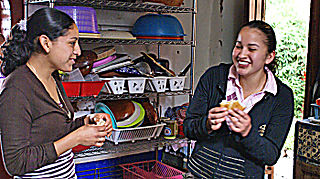
Susy (left) and Elizabeth giggle over sandwiches of telera (a flattish bread) and frijolitos estilo Celia (refried beans the way Mexico Cooks! prepares them).
"Chef Cristina is a
believer in using manteca (lard) in refried beans. We have resisted this for
health reasons, but after tasting her version of frijoles peruanos with
a hint of chile serrano sautéed in that magical fatty substance, we are
going to have to offer both versions to our clientele. If you are
against eating lard, you can just tell us, and we will make your
frijoles the new-fashioned way, in olive oil. I can just hear Chef
Cristina snickering."
Read the rest of the story at: http://erongaredstarcafe.blogspot.com/2008/07/chefa-cristina-potters-to-our-rescue.html
As we say in Mexico, 'Cada quien a su gusto'…to each his own taste. Mexico Cooks! wouldn't choose olive oil for preparing refried beans, but we can almost understand that some people might choose health over flavor.
Here's the recipe:
Frijolitos Refritos Estilo Celia (Refried Beans Celia's Way)
Ingredients
Dried peruano beans, cooked in plain water until very soft (about 2 1/2 hours)
1 or 2 chiles serrano, depending on your tolerance for picante (heat)
2 Tbsp lard
Bean-cooking liquid
Sea salt to taste
Queso cotija (aged Mexican sharp white cheese), crumbled
Method
Over high flame, melt lard in a medium-size heavy skillet. While the lard melts, split the chiles in half from the tip almost to the stem end. Add the chiles to the melted lard and fry until the chile skins are dark brown, nearly black. Allow the lard to cool slightly.
Add the amount of cooked beans that you'll need. For three servings, Mexico Cooks! uses about two cups of beans. Add enough bean-cooking liquid to allow you to mash the beans easily. When the beans are heated through, begin to mash them with a heavy potato masher or a wooden bean masher. Mash the beans, the lard, AND the chiles into a fairly smooth and slightly liquid paste. Add more bean-cooking liquid as necessary. We usually leave a few semi-mashed beans for a little texture. Add sea salt to taste.
Plate the frijolitos refritos and sprinkle heavily with queso cotija. Serves three as a side dish for breakfast.
Another delicious (and don't knock it till you've tried it) snack to prepare with frijolitos refritos is a sandwich similar to the ones Susy and Elizabeth are eating in the photo. Buy half a dozen bolillos (Mexican bread for tortas) and slice in half lengthwise. Take out some of the crumb so that a hollow is left in each half of the bolillo. Fill the hollows with plenty of frijolitos refritos, add queso cotija, garnish with sliced pickled jalapeños (this is optional), make the halves of the bolillos into sandwiches, and eat. These are marvelous for picnics, as they require no refrigeration and absolutely thrill your mouth.
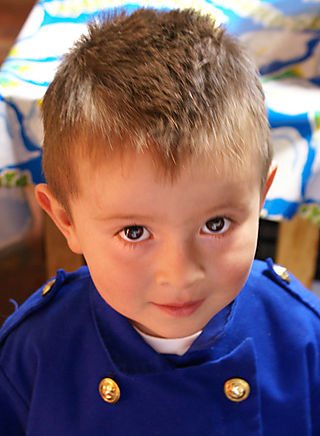
Juan's son Fernando David is the real boss at the Red Star Café.
Buen provecho! (Good appetite!)
Red Star Café
Portal Hidalgo #3
Erongarícuaro, Michoacán
Hours: Breakfast Only
October 24, 2008: Mexico Cooks! regrets to inform you that the Red Star Café closed in September 2008.
